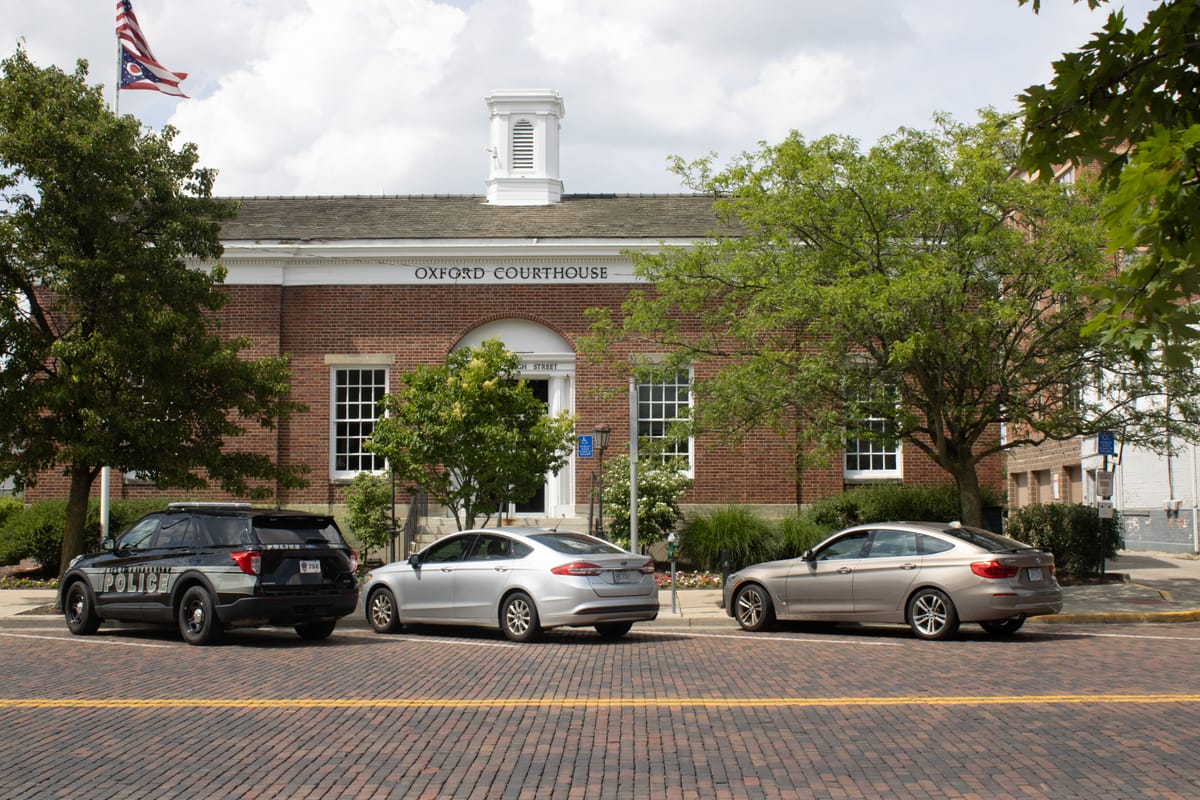Council talks 2026 priorities during work session
City staff and officials put special focus on economic development, placemaking an essential services during a work session exploring 2026 budget priorities this week.

Economic development, placemaking and essential services were high on the list of budget priorities for Oxford City Council members during a June 17 work session.
Oxford passes its annual budget in December each year, but the planning begins much earlier. During the work session, Assistant City Manager Jessica Greene laid out a series of initial recommendations for what to focus on in the 2026 budget cycle. None of the discussions during the work session were binding, but staff will use the suggestions and input to draft the preliminary budget set to be presented in October.
This year’s budgeting process is especially difficult for municipalities in Ohio, with multiple potential state initiatives that could impact funding availability. The efforts follow sharp increases in property valuations in 2023, which have saddled property owners with tax increases. In Butler County, the average property tax increase was 37%.
One group based in Cuyahoga County is pushing to place a constitutional amendment question on the November ballot to eliminate property taxes entirely, wiping out a key source of funding for local governments and schools. Several state proposals, including a cap on school district savings, have also targeted property taxes, and House Bill 335 would eliminate inside millage — up to 10 mills of property tax that can be collected without going to voters for approval.
City Manager Doug Elliott submitted opponent testimony to H.B. 335. If passed, the bill would strip Oxford of $1.8 million in annual funding, more than 12% of its annual general fund revenue, he said during a regular council meeting after the work session. The ballot initiative would have an even greater impact on Oxford’s essential services and operations.
“Eliminating all property taxes would be like jumping off a cliff and hoping someone catches you,” Elliott said.
The city’s priorities are guided by a 2023 comprehensive plan, Oxford Tomorrow, which lays out key focus areas to guide city development through the next decades. Below are some of the recommended budget priorities, which Greene stressed are still in draft form and not final, laid out during the work session.
Economic Development
The Community Improvement Corporation (CIC) voted to recommend continuing with several multi-year goals while building on the city’s new economic development strategic plan, which was recently completed. The city committed to putting $270,000 per year toward economic development initiatives as part of a 10-year agreement with Miami University to fund the fire department. Once Miami’s 10-year annual commitment of $1.27 million runs out, the city will need to fill the gap with tax revenue or other funding sources.
Greene presented three recommended continuing goals: expanding childcare options for the community, expanding cultural events in town and improving event safety. City staff has researched ways to improve safety for large Uptown events like the Bee Festival and Red Brick Fridays, and Greene said one idea is to spend $100,000 on better barricades that could stop vehicles when events need streets to close down.
Among the new economic development goals for 2026, the CIC recommended advancing objectives from the strategic plan, restructuring and empowering the CIC, writing grants for infrastructure site readiness for key economic development sites and developing incentives and rubrics for applications.
Celebration of people
The 2023 comprehensive plan laid out a major focus area for celebrating the people and places that make Oxford unique. City staff from the community development and parks and recreation departments recommended several placemaking goals under that umbrella.
Continuing initiatives include expanding the now-annual cemetery tours to Woodside Cemetery and installing public art at the Duke Energy substation. A mural for the wall outside the substation was planned for 2025 but has been delayed.
New initiatives include creating a new parks master plan, the most recent of which is from 1997, adding more pickleball courts at the TRI Community Center, collaborating with the TRI Board on a proposal to dramatically expand the TRI and rebranding park signage to be more cohesive with other city departments.
Essential services
Recommendations for funding essential services came from the service, fire and police departments, Greene said. Voters approved a levy to support Fire and EMS services last year, which also opened up funding from Miami, so the fire department in particular is looking to spend that money as it comes in.
The fire department recommended increasing full-time fire staffing as proposed during levy discussions, exploring staffing models and rank structure to see if alternative options would better serve the community, and looking into capital costs for equipment. Expenses like new vehicles and uniforms come at a high cost, and Greene said the city is looking at $2 million for capital costs for the fire department next year.
The police department recommended hiring a new public safety technical specialist who would address technological needs for the police and fire departments. The city had a similar position until 2013, and Greene estimated that the new role could cost roughly $100,000, including salary and benefits.
Other essential services recommendations included increasing the allowable time for parking on side streets to four hours, conducting a feasibility study for remodeling or rebuilding the courthouse, circulating volunteer opportunities for councilors at city events and hosting department lunch and learns with councilors to understand city operations.
Other recommendations
Economic development, placemaking and essential services had the most priorities, but by far the most expensive initiative planned for 2026 is the city’s $18.9 million water softening project. Elliott said the project is in the process of getting approval from the Environmental Protection Agency now and should go out for bids in July.
Other priorities included initiatives in transportation, sustainability and housing, all longtime council goals. Work on Phase Five of the Oxford Area Trail System will continue in 2026, and city staff also recommended getting cost estimates for interior spokes for the trail.
Under sustainability, the Environmental Commission has recommended continuing with plans to solarize the closed landfill and holding zero waste events. New goals include installing an additional flare at the closed landfill to burn off methane, solarizing water and wastewater infrastructure and hosting a hazardous waste collection day.
Finally, under housing, the Housing Advisory Commission recommended continuing with several multi-year projects, including a Habitat for Humanity development on Chestnut Street, an affordable housing development on Hester Road and plans for a mixed-income development on 47 acres of city-owned land near the Western Knolls. New recommended goals include creating an approach for helping unhoused people and increasing the inventory of affordable housing units.
The recommended priorities are not binding but will guide city staff through the budget process for 2026. Greene recommended that each councilor provide their top three priorities to city staff, as well, to make sure the budget aligns with council goals.




